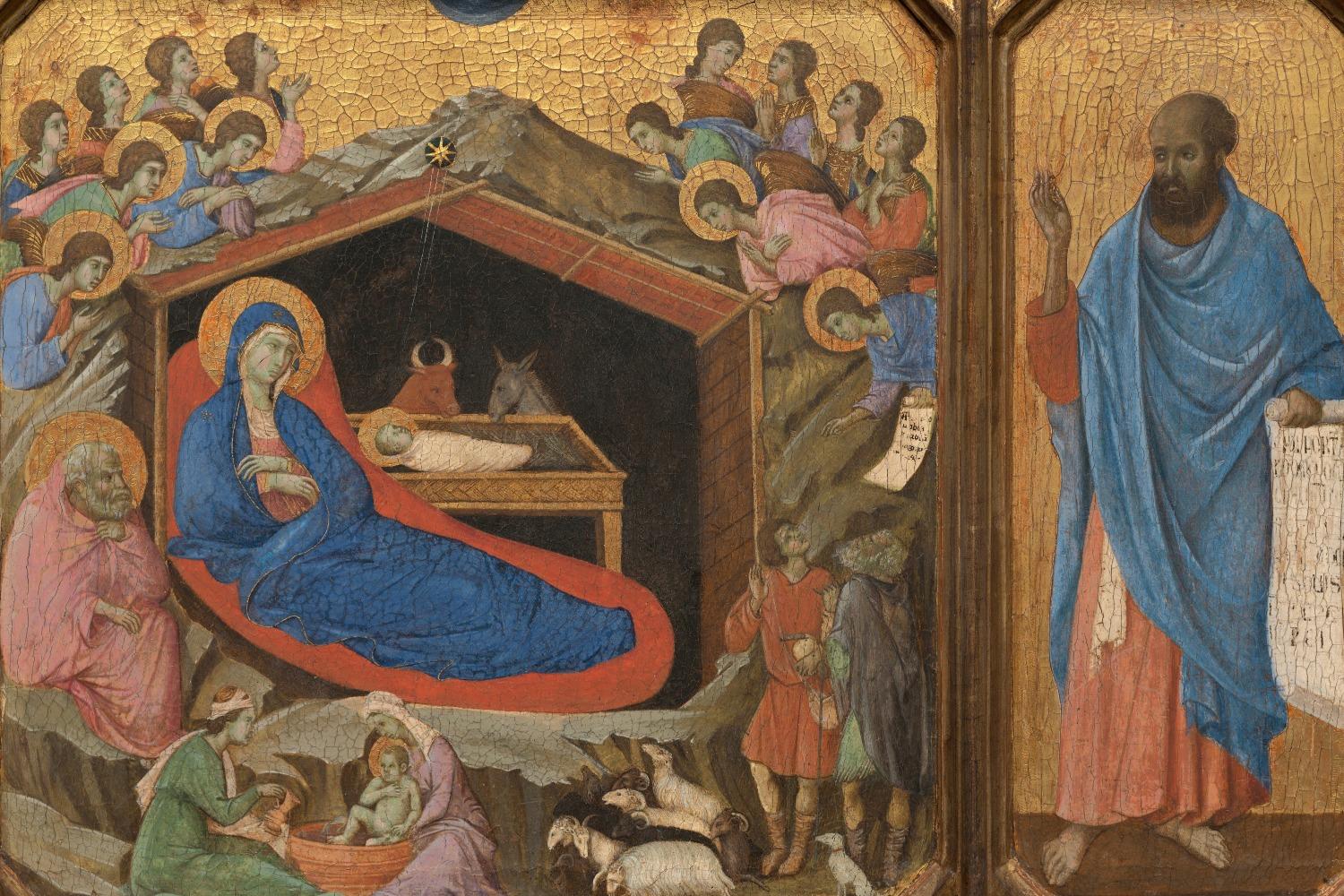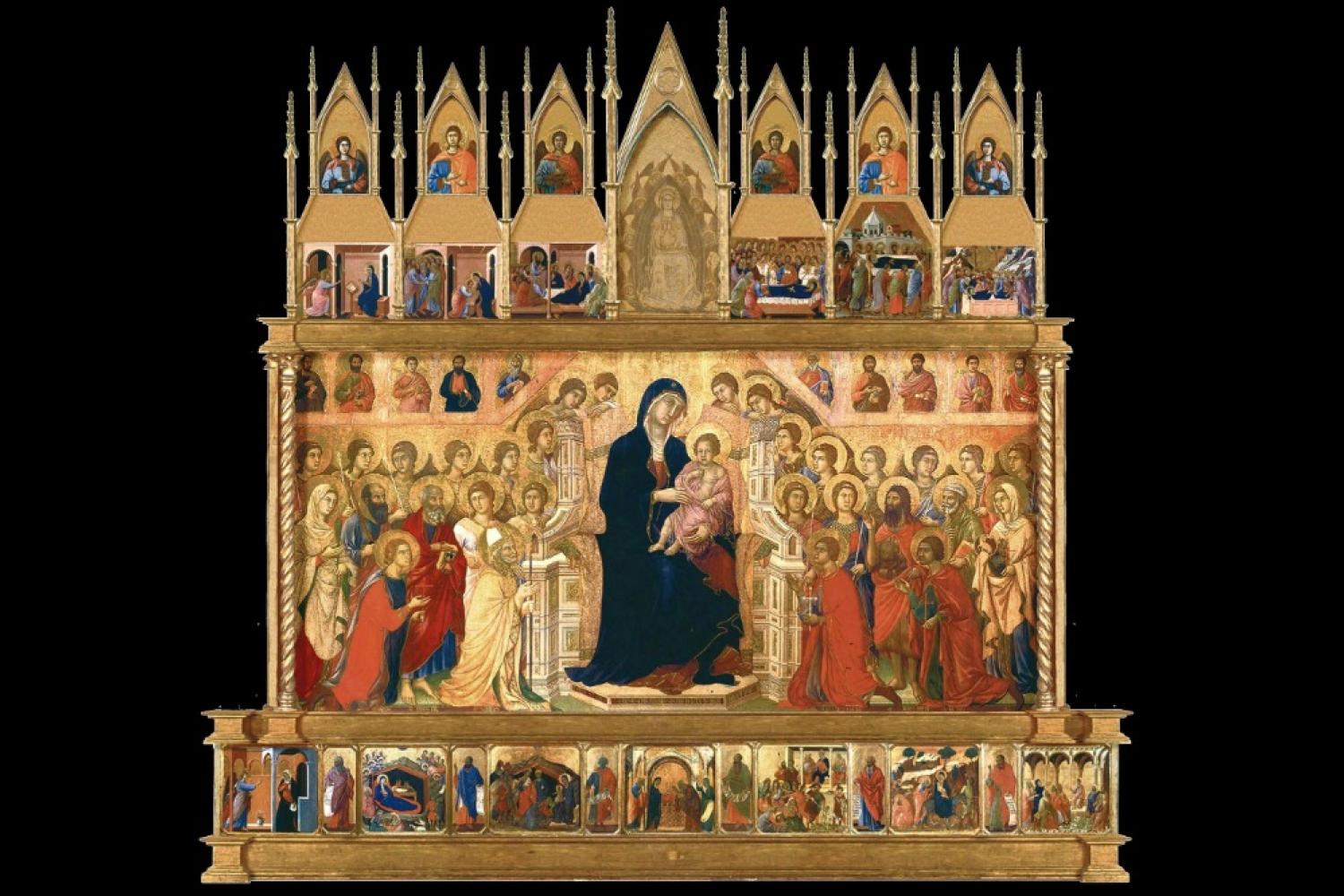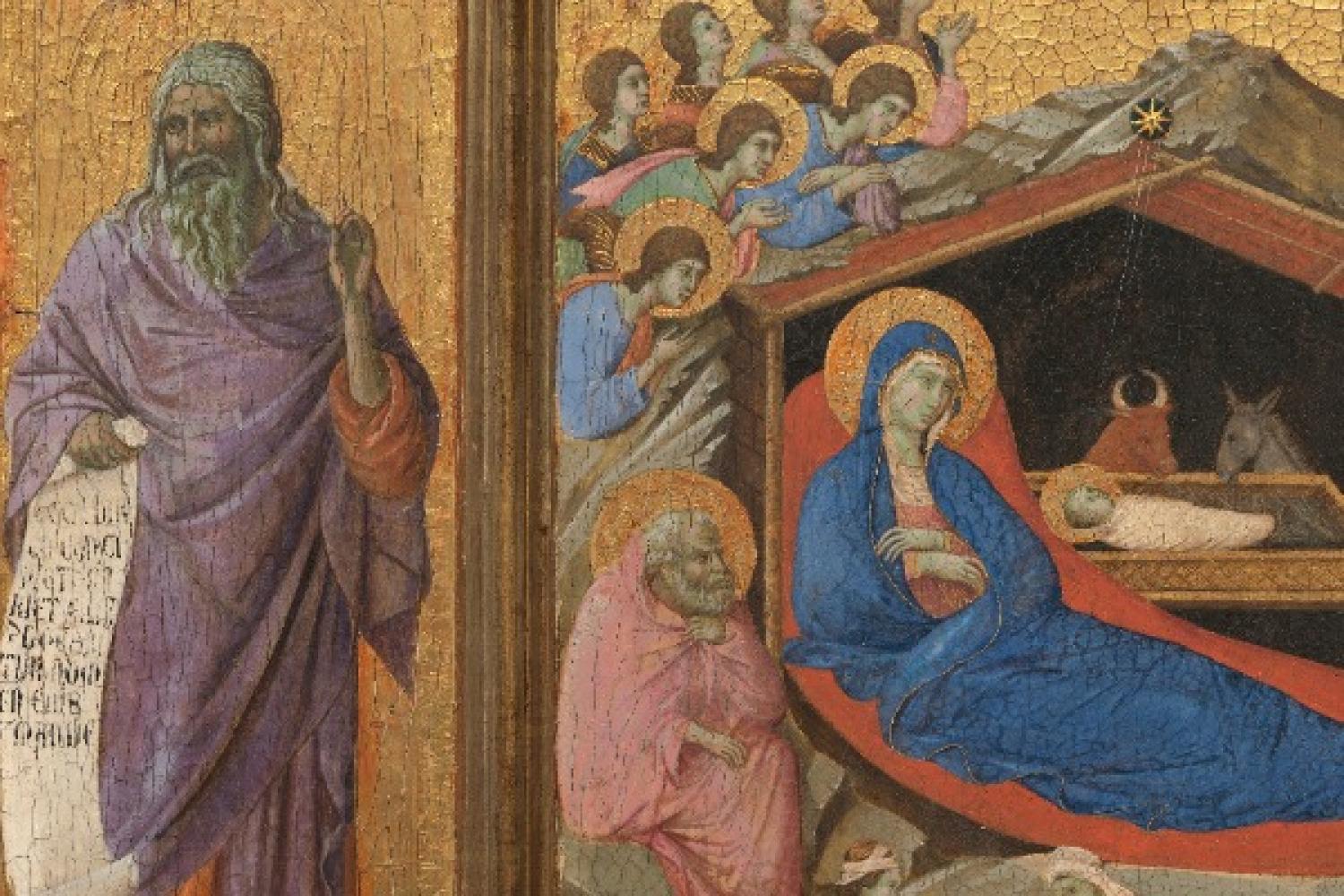
Duccio di Buoninsegna was an Italian painter active at the turn of the fourteenth century. While few details of Duccio’s life are known for certain and only a small number of his identified works survive, he appears to have been influential in and around his hometown, Siena, during his own lifetime. While some believe that he studied under Cimabue (who was also the master of Giotto), others believe he trained under a Byzantine master in Constantinople. His works, which were created on wood and depict scenes set against gold-leaf backgrounds, utilized rich colors made possible by egg-based tempera paint. Duccio's work is regarded as a step from the two-dimensional Byzantine tradition that dominated painting in Italy during his lifetime into more realistic styles, and his inclusion of architectural elements in his scenes is unique for artists of his time.
In 1308, Duccio was commissioned to paint a large altarpiece by the city of Siena. Because the altarpiece would be visible from all sides, it was painted on both sides. In total, over 70 scenes cover the altarpiece, which is over 16 feet tall. This altarpiece, the Maestà, was installed on the high altar of the Siena Cathedral after a formal procession in which shops in the city of Siena were shut down. The Maestà adorned the high altar of the cathedral for over four centuries, after which it was systematically broken down in an attempt to distribute its pieces across multiple altars.
Near the bottom left of the altarpiece can be found Duccio’s depiction of the Nativity. Duccio’s Nativity scene includes several different stories at once and shows the artist’s interest in exploring physical space in his works. While Christ sleeps in the manager under the loving presence of his mother, he is painted again below being bathed by two midwives. Viewers will note that the basin in which Christ is bathed bears the shape of a communion cup; at the same time, the symbolic reminders of Baptism are obvious. The shepherds, standing near their livestock, are simultaneously depicted as receiving the message from the angels and standing near the manger.
Duccio situates his Nativity scene between the prophets Ezekiel and Isaiah (to the viewer’s left and right, respectively). The prophet Ezekiel is credited with the origins of Mary’s honorific title, “The Gate of Heaven,” as his prophetic utterance has long been understood to refer to the Virgin Birth: "This gate shall be shut, it shall not be opened, and no man shall pass through it; because the Lord the God of Israel hath entered in by it” (Ezekiel 44:2). The prophet Isaiah’s scroll references his famous prophecy, “Behold, a virgin shall conceive and bear and son, and his name shall be called Emmanuel.” The prophets flanking the scene offer a reminder of the context of Christ's birth: the hope of the long Advent of the Old Testament is fulfilled in a quiet manger in a forgotten corner of the world.

The First Draught
To receive the Weekly Update in your inbox every week, along with our weekly Lectio Brevis providing insights into upcoming Mass readings, subscribe to The First Draught.

